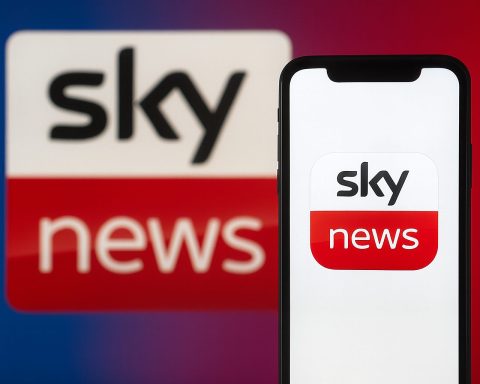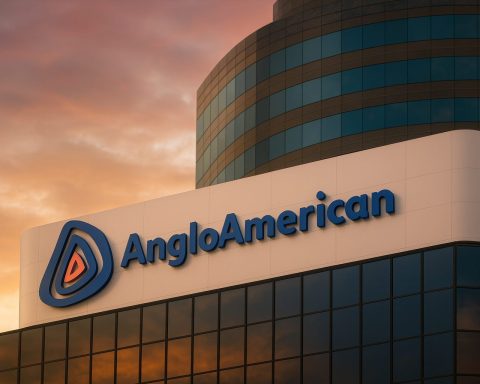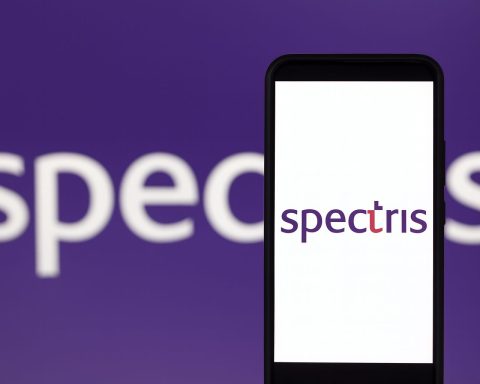November 26, 2025
After a red‑hot first three quarters, the US IPO market is ending 2025 in a far more fragile mood. A record‑length government shutdown has left the Securities and Exchange Commission (SEC) digging through an “epic” filing backlog, volatility has cut IPO returns to single digits, and the December equity capital markets (ECM) window is suddenly looking very tight. [1]
At the same time, the regulator’s drive to “make IPOs great again” by easing rules for issuers is colliding with investor caution and weak aftermarket performance. Law firms and banks are busy again – but much of the work now is triage, with many deals quietly sliding into 2026. [2]
Below is a deep dive into how politics, policy and markets are shaping today’s listings – and what this means for issuers watching the shrinking December window.
1. SEC’s push to “make IPOs great again”
SEC chair Paul Atkins has made no secret of his mission: reverse the long‑term decline in the number of US‑listed companies by stripping out what he sees as unnecessary regulatory “friction” that keeps businesses private. [3]
Under his leadership and President Donald Trump’s second term, the SEC has backed or enabled a series of moves aimed at lowering the perceived cost and risk of going public, including: [4]
- Allowing some companies to adopt bylaws that effectively steer shareholder securities claims away from class‑action lawsuits and into arbitration.
- Giving issuers more scope to exclude shareholder proposals from proxy ballots, particularly on contentious environmental, social and governance (ESG) topics.
- Entertaining long‑standing political pressure to dial back quarterly reporting requirements, arguing that short‑term earnings pressure discourages listings.
A recent Financial Times column, titled “Making IPOs great again has its pitfalls”, warned that chasing a higher raw count of IPOs risks repeating past cycles where weaker companies are pushed to market under looser rules, only to disappoint public investors. [5]
Critics argue that combining lighter investor protections with new “fast‑track” mechanisms – such as the ability to let IPOs go effective automatically under Securities Act Section 8(a) – could erode trust in the very public markets policymakers are trying to revive. [6]
2. A 43‑day shutdown and an epic SEC filing backlog
The political backdrop to the current ECM squeeze is the longest US government shutdown in history. Most federal agencies, including the SEC, operated under severely limited capacity from October 1 until mid‑November, when President Trump signed a funding bill on November 12 to reopen government through January 30. [7]
During the shutdown:
- Around 90% of SEC staff were furloughed.
- The agency said it would keep accepting IPO and other offering documents but would not review or comment on most filings. [8]
- To help issuers, the SEC updated its shutdown FAQs to clarify how companies could remove the standard “delaying amendment” and allow their registration statements to go effective automatically after 20 days under Section 8(a), using a price range rather than a fixed price. [9]
Only a handful of companies were willing to use that path. Biotech MapLight Therapeutics and travel‑tech group Navan became rare examples of IPOs that priced during a shutdown by going effective automatically. Cooley, which advised MapLight, described the dual listings as “historic”, noting that the last time something similar happened may have been in the 1930s. [10]
When the government reopened, SEC staff returned to a mountain of paperwork. An internal email, reported by Bloomberg and picked up by Insurance Journal, told staff to prioritise registration statements above routine reviews of public company financials. More than 900 registration statements had rolled in during the shutdown, and supervisors described the post‑reopening challenge as “triage”. [11]
The backlog lands in the middle of an IPO boom:
- The SEC’s Division of Corporation Finance says it is “working expeditiously” through filings in the order received. [12]
- According to CFO Dive, 23 US IPOs raised at least $100 million in Q3 2025, including five billion‑dollar deals, and offerings through October 1 raised about 47% more than the same period in 2024. [13]
But the calendar has limited room left. With the shutdown stealing six crucial weeks from bankers’ and SEC staff’s workloads, December and January have effectively merged into one extended “catch‑up” window – and not everyone will make it in.
3. Investor returns shrink as volatility bites
The market mood has shifted sharply in November.
An Associated Press analysis notes that after a “red‑hot” start, the 2025 IPO cohort is now delivering only modest gains: the weighted average return for US IPOs this year has fallen to about 6%, down from more than 20% just a week earlier, as volatility has pummeled the riskiest names. [14]
High‑profile listings in sectors such as tech and AI – including Figma, Klarna, CoreWeave and Navan – have seen choppy or negative aftermarket performance as investors reassess valuation peaks reached earlier in the year. [15]
Meanwhile:
- The S&P 500 is down roughly 3.5% so far in November, though still up more than 12% year‑to‑date – a combination that encourages profit‑taking and makes investors more selective about new issues. [16]
- Coverage in The Economic Times and Times of India – drawing on US data – suggests November is on track to be one of the slowest months for US IPOs in 2025, with the SEC backlog and a pullback in tech valuations both weighing on issuance. [17]
As Ion Analytics’ ECM Pulse North America put it, the SEC’s return “has restored the mechanics of the IPO process, but the decision to launch remains defined by sentiment rather than procedure.” Investors are still active but more deliberate, and the bar for bringing a new deal has risen. [18]
4. How law firms and banks are navigating the post‑shutdown crunch
For capital markets lawyers, the last few weeks have been a delicate balancing act.
A new IFLR interview published today with Lowenstein Sandler capital markets partner Daniel Forman describes how his team is seeing a surge in client demand as companies re‑engage after the shutdown, but often with less flexibility on timing. Many had roadshows pencilled in for October or early November that are now being re‑worked around SEC capacity and market conditions. [19]
Forman has been close to the disruption from the start. In an earlier ECM Pulse piece on “Washington gridlock”, he recalled one direct listing Lowenstein advised that only just went effective before the shutdown began, while another IPO was left waiting for comments with no clarity on when staff would return. “We can’t take registration statements effective until the SEC is back at their desks,” he noted at the time. [20]
Other firms are telling similar stories:
- Davis Polk partner Michael Kaplan told Bloomberg that “most pending IPOs will be 2026” because there simply isn’t enough time for deals still early in the SEC comment process to clear before year‑end – especially once staff holidays are factored in. [21]
- Cooley’s shutdown guidance stresses that while the Section 8(a) “effective by passage of time” route can keep IPOs moving, it demands extra care on financial statement staleness and disclosure, since companies lose the comfort of a full SEC review before going effective. [22]
The practical outcome: many issuers are now running dual tracks – preparing to go in late December if the market cooperates, while also planning for a January or even Q2 2026 launch if volatility or SEC timing prove unworkable. [23]
5. Today’s deal flow: what’s happening on 26 November 2025
Despite the headwinds, capital markets are far from closed. Today’s tape shows a mix of cautious activity and bright spots around the world.
5.1 US: SPACs and specialised healthcare listings
- SC II Acquisition Corp SPAC prices $150m IPO
SC II Acquisition Corp has priced its initial public offering of 15 million units at $10 each, for gross proceeds of $150 million. The units – each comprising one Class A ordinary share and a right to receive one‑fifth of a Class A share upon a future business combination – begin trading today on Nasdaq under the ticker SCIIU, with the deal expected to close on November 28. Underwriters have a 45‑day option to buy up to 2.25 million extra units. [24] - Regentis Biomaterials on today’s IPO calendar
IPO calendars from StockAnalysis and Yahoo Finance show Israel‑based Regentis Biomaterials scheduled to price a relatively small US IPO today, offering around 1 million shares at a price range of $10–12, for an estimated deal size of about $11 million on Nasdaq (ticker RGNT). [25]
These transactions underscore a key theme of late‑2025 issuance: smaller, more specialised deals – often in healthcare or via SPAC structures – are still coming, even as jumbo listings increasingly look to 2026.
5.2 India: Excelsoft Technologies’ strong debut
In India, Excelsoft Technologies provided a reminder that investor appetite for the right story remains robust.
- The education‑technology and software firm’s ₹500 crore (approx. $60 million) IPO, which was subscribed more than 43 times between November 19 and 21, listed today at ₹135 on the BSE – a 12.5% premium to its ₹120 issue price – implying a market capitalisation of around ₹1,554 crore. [26]
- The debut significantly beat expectations from the grey market, where unofficial trading had implied only a low‑single‑digit premium ahead of listing, according to local market data cited by Mint. [27]
For global investors, Excelsoft’s showing is a useful data point: even as US IPO returns slide, demand can still be strong in other markets for profitable, growth‑oriented companies with clear use‑of‑proceeds stories.
5.3 Europe: Capital markets days keep investors engaged
- Atlas Copco capital markets day
In Germany, Sweden’s Atlas Copco Group is hosting its 2025 capital markets day, focusing on its Vacuum Technique and Industrial Technique divisions. Management is using the event to reiterate its outlook that customer activity should “remain at the current level”, while showcasing new technologies through an on‑site innovation tour. [28]
Though not “deals” in the narrow sense, such investor days matter in a skittish market: they help anchor expectations and can be a prelude to future equity raises or spin‑offs once conditions normalise.
5.4 Looking to 2026: Bill Ackman’s $5bn Pershing Square plan
Even as the 2025 window narrows, some of the biggest prospective offerings sit just over the horizon:
- Reuters reports that Bill Ackman’s Pershing Square Capital Management is preparing a US‑listed closed‑end fund targeting around $5 billion in assets, to be listed alongside an IPO of the hedge fund itself, potentially in early 2026. Investors in the new fund would also receive free Pershing Square shares as a sweetener. [29]
If successful, the twin listings would rank among the largest equity offerings of the post‑shutdown era – and provide a major test of investor confidence in active managers after several years of outflows to passive funds.
6. Key takeaways for issuers eyeing the December window and beyond
Putting the regulatory moves, shutdown fallout and today’s deal flow together, several messages stand out for companies considering an IPO or other ECM transaction.
6.1 Timing is now a range, not a date
With the SEC still working through hundreds of delayed filings and the market’s risk appetite shifting week‑to‑week, advisers increasingly talk about windows rather than specific listing days:
- Many companies are now planning dual scenarios: a late‑December launch if SEC comments and market conditions line up, and a contingency plan for January or even later in 2026 if they do not. [30]
- Holidays and staff vacations at both issuers and regulators add further uncertainty; several bankers expect January to be “even busier” than December for catch‑up deals. [31]
For boards, that means building flexibility into financing plans and being ready to adjust the mix between IPOs, follow‑ons, convertibles or private funding as conditions evolve.
6.2 Fast‑track routes come with real risk
The shutdown experience has proven that IPOs can proceed with minimal SEC interaction by using Section 8(a) and dropping delaying amendments. But the aftermath is sobering:
- Several of the high‑profile issuers that used shutdown workarounds, including MapLight, Beta Technologies and Navan, are now trading below their IPO prices. [32]
- Both the SEC and law firms stress that avoiding a full review does not reduce liability; if disclosures later prove incomplete or misleading, issuers still face enforcement and litigation risk. [33]
In practice, most companies will still prefer to clear staff comments before pricing – especially in a political environment where any future scandal could prompt a regulatory snap‑back.
6.3 Deregulation vs. investor protection: the balance is delicate
Atkins’ agenda to remove perceived obstacles – from class‑action exposure to shareholder activism and quarterly reporting – may encourage some private‑equity‑backed or founder‑led companies to consider listing. [34]
However, institutional investors are watching the pendulum closely:
- Many argue that strong governance, robust disclosure and meaningful shareholder rights are key to supporting valuations over the long term – especially after a year when some aggressively priced tech IPOs have quickly fallen below issue levels. [35]
- Any perception that regulators are weakening investor protections just as alternative “fast‑track” IPO routes are used more frequently could deepen discounting and further narrow the pool of buyers. [36]
For issuers, that means treating deregulation as optional headroom, not a license to cut corners. Many will conclude that voluntarily adopting higher governance standards than the legal minimum is a cheaper way to sustain demand than chasing loopholes.
6.4 Global markets still reward the right stories
Finally, today’s action outside the US is an important reminder: capital doesn’t live in one market.
- Excelsoft Technologies’ 12.5% premium listing in India, after a 43‑times subscribed book, shows that investors still back well‑positioned, cash‑generating businesses even as they turn more cautious on speculative growth names. [37]
- European industrials like Atlas Copco are using capital markets days to keep investors engaged and informed, laying groundwork for future issuance if needed. [38]
For some companies – particularly those with global revenue footprints – dual listings or choosing a non‑US venue may look more attractive if US regulatory uncertainty and volatility persist.
The bottom line
As of November 26, 2025, the US IPO market is neither closed nor booming. The mechanics are back in place after the shutdown, and specialist deals like SPACs and cross‑border listings continue. But a combination of SEC backlog, patchy aftermarket performance and higher volatility has turned the December ECM window into a game of musical chairs.
Issuers that succeed in the coming weeks and into early 2026 are likely to be those that:
- Prepared early, including for SEC delays;
- Have clear, credible paths to profitability; and
- Treat investor confidence and governance as strategic assets, not compliance boxes.
For everyone else, patience – and careful planning for a different market in 2026 – may prove the better route.
References
1. www.cfodive.com, 2. www.insurancejournal.com, 3. www.ft.com, 4. www.ft.com, 5. www.ft.com, 6. www.lexology.com, 7. www.cfodive.com, 8. www.cfodive.com, 9. www.lexology.com, 10. governancebeat.cooley.com, 11. www.insurancejournal.com, 12. www.cfodive.com, 13. www.cfodive.com, 14. www.insurancejournal.com, 15. apnews.com, 16. apnews.com, 17. m.economictimes.com, 18. ionanalytics.com, 19. www.iflr.com, 20. ionanalytics.com, 21. www.insurancejournal.com, 22. www.lexology.com, 23. www.cfodive.com, 24. www.stocktitan.net, 25. stockanalysis.com, 26. www.moneycontrol.com, 27. www.livemint.com, 28. news.cision.com, 29. www.reuters.com, 30. www.cfodive.com, 31. www.cfodive.com, 32. www.insurancejournal.com, 33. www.lexology.com, 34. www.ft.com, 35. apnews.com, 36. www.lexology.com, 37. www.moneycontrol.com, 38. news.cision.com







